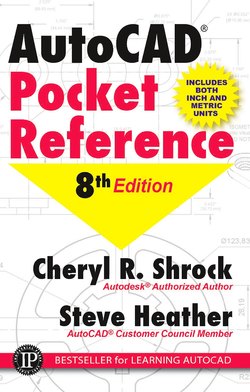Читать книгу AutoCAD Pocket Reference - Cheryl R. Shrock - Страница 10
На сайте Литреса книга снята с продажи.
ОглавлениеSection 3 Dimensioning
Dimensioning
Dimensions can be Associative, Non-Associative or Exploded. You need to understand what these are so you may decide which setting you want to use. Most of the time you will use Associative but you may have reasons to also use Non-Associative and Exploded.
Associative
Associative Dimensioning means that the dimension is actually associated to the objects that they dimension. If you move the object, the dimension will move with it. If you change the size of the object, the dimension text value will change also.
(Note: This is not parametric. In other words, you cannot change the dimension text value and expect the object to change. That would be parametric dimensioning.)
Non-Associative
Non-Associative means the dimension is not associated to the objects and will not change if the size of the object changes.
Exploded
Exploded means the dimension will be exploded into lines, text and arrowheads and Non-Associative.
How to set dimensioning to Associative, Non-Associative or Exploded.
1. On the Command Line type: dimassoc <Enter>
2. Enter the number 2, 1 or 0 <Enter>
2 = Associative
1 = Non-Associative
0 = Exploded
Note: The default factory setting is ‘2’ Associative.
How to Reassociate a dimension
If a dimension is Non-Associative, and you would like to make it Associative, you may use the dimreassociate command to change.
1. Select Reassociate using one of the following:
Ribbon = Annotate Tab / Dimensions Panel / or Keyboard = dimreassociate <Enter>
2. Select objects: select the dimension to be reassociated.
3. Select objects: select more dimensions or <Enter> to stop.
4. Specify first extension line origin or [Select object] <next>: (an “X” will appear to identify which is the first extension); use Object Snap to select the exact location, on the object, for the extension line point.
5. Specify second extension line origin <next>: (the “X” will appear on the second extension) use object snap to select the exact location, on the object, for the extension line point.
6. Continue until all extension line points are selected.
Note: You must use object Snap to specify the exact location for the extension lines.
Regenerating Associative dimensions
